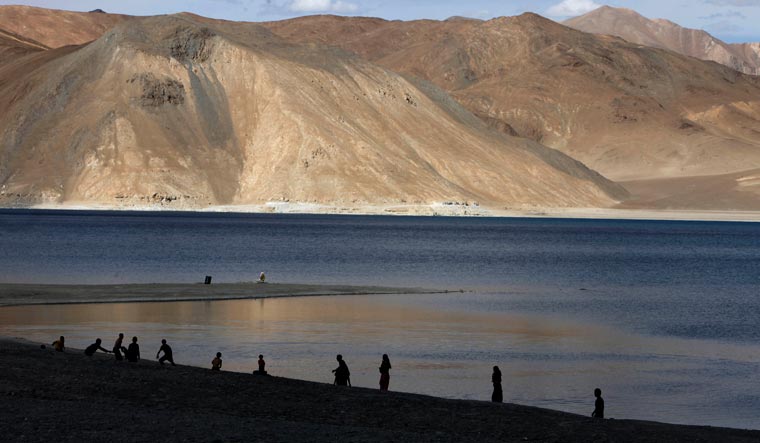As the Ladakh standoff completes one month, all eyes are on Saturday's lieutenant general-level meeting of the Indian Army and Chinese People's Liberation Army (PLA). This will be the highest-level military engagement so far after eight rounds of talks at level of local military commanders, including three at major-general level, failed to defuse the tension.
Leh-based XIV Corps Commander Lt General Harinder Singh will be meeting his counterpart on Chushul-Mondo Border Personnel Meeting Point, which is on the Chinese side. Before taking over the post of XIV Corps commander in October last year, Lt Gen Singh was heading the intelligence wing of the Indian Army as the director general, Military Intelligence, in the Army headquarters.
For over a month, Indian and Chinese forces have been in an eyeball-to-eyeball situation and over 5,000 Chinese PLA troops (strength of a brigade) are camped in four-five locations in Galwan valley region, northern bank of Pangong lake and Demchok. Multiple sources have confirmed that the Chinese have intruded well inside of Indian side of Line of Actual Control. In response, the Indian side is doing the mirror mobilisation of forces like similar number of artillery, armoured vehicles and infantry troops to match Chinese Army close to the standoff sites.
In the last one month, both sides made repeated efforts to resolve the issue, as eight rounds of talks at level of local military commanders have taken place so far to defuse the tension.
So, in this way, Saturday's meeting would be the highest level of military engagement between the two sides.
Military observers believe that the situation on the face-off locations has somewhat stabilised as no further escalations or incident of violence between Indian and Chinese armies have been reported.
"Thrust of the talks would be to insist on return to pre-May 5, 2020, status quo on the LAC. Then, other issues like use of force and aggressive patrolling by Chinese troops in the area like Galwan and Pangong Tso will also be on the discussion table," said a senior defence official.
Another official maintained face-offs between the two sides during patrol is nothing "unusual". But they disengage quickly by following the laid-down procedures. "But this time, Chinese patrols had more number of troops than regular patrol. Presence of large [number of] troops during patrols would be also raised during tomorrow's meeting," an officer added.
An observer believed that Saturday's military talks would pave the way for diplomatic-level talks like at the level of special representative. He added that border issue has not been resolved in 30 years of negotiations where both sides have attended 22 rounds of special representative-level talks. It is notable that China disputes its boundary with India, as it does not agree with the legality of the McMahon Line, asserting that it was drawn by the imperialist British power.
Chinese troops have pitched tents on Indian side of LAC on Galwan river and Demchok areas. It is believed that Chinese troops had objected to road construction activities in the DBO and Galwan Nala (river) areas. Alignment of Darbuk-Daulat Beg Oldi (DBO), stretching 255 km, improves the Indian military's connectivity with DBO and allows movement of men and material. This has caused serious trouble to Chinese military.
Large presence of Chinese troops in the area is seen at four points on the Galwan River. An official claimed that the main aim of the PLA was to stop construction of the feeder road joining the DBO Road completed last year.
"Chinese military does have the tendency to assert its claim on the LAC. They are entitled to do whatever they do in their territory, but not on the 'disputed' area," an official added. There are about 23 “disputed and sensitive areas” on the Line of Actual Control, stretching from Arunachal Pradesh to Ladakh region. The sensitive areas in Ladakh include Trig Heights, Dumchele, Chumar, Spanggur Gap and Pangong Tso. Other disputed areas are Namkha Chu, Sumdorong Chu, Asaphila, Dichu, Yangtse, Fish Tail-I & II in Dibang Valley in Arunachal and Barahoti, Kaurik and Shipki La in middle sector.
Meanwhile, Beijing has appointed a new military commander to oversea the PLA ground forces on the border with India. Lt. Gen Xu Qiling is the new commander of PLA Western Theatre Command Ground forces.



